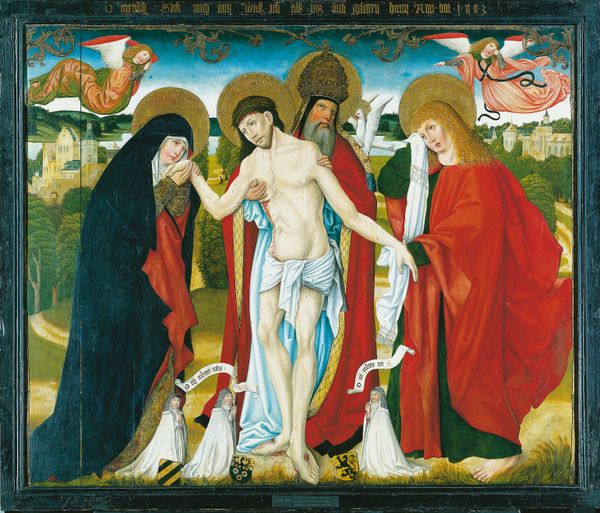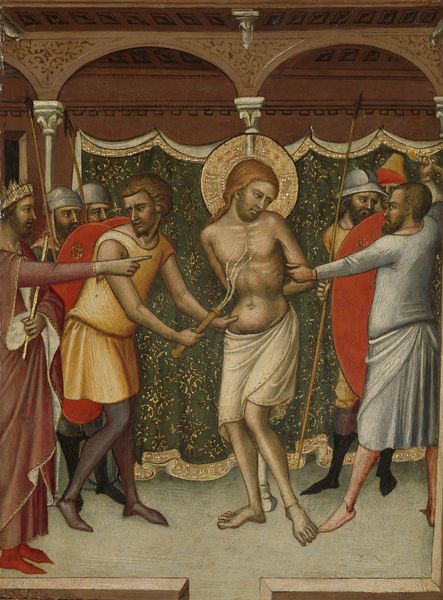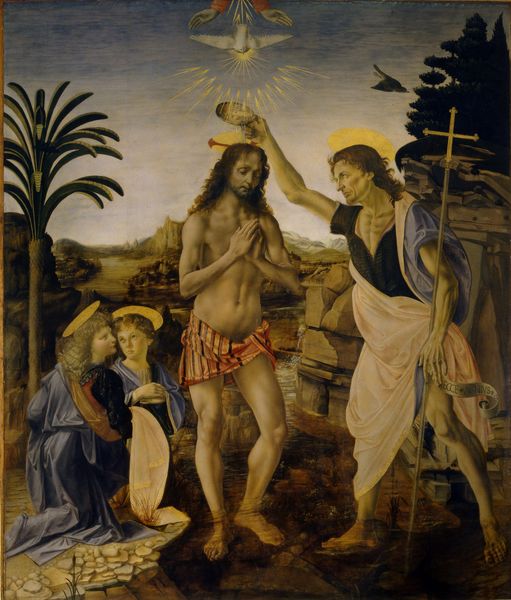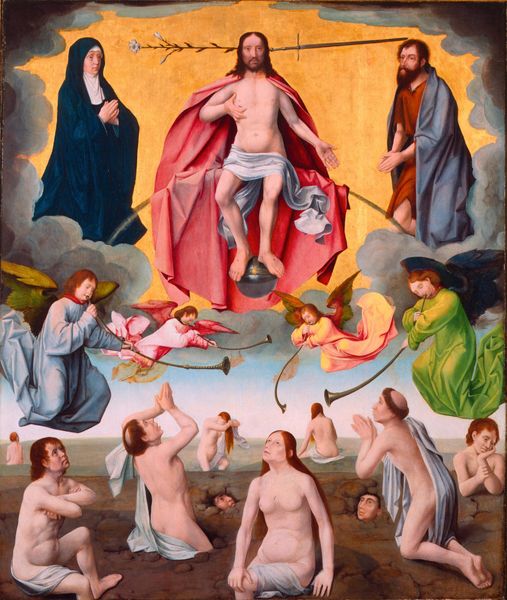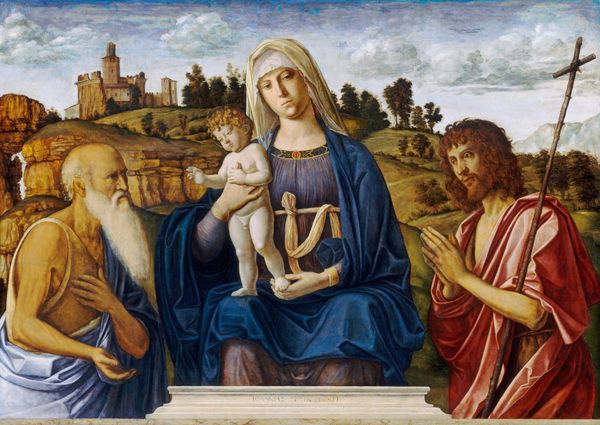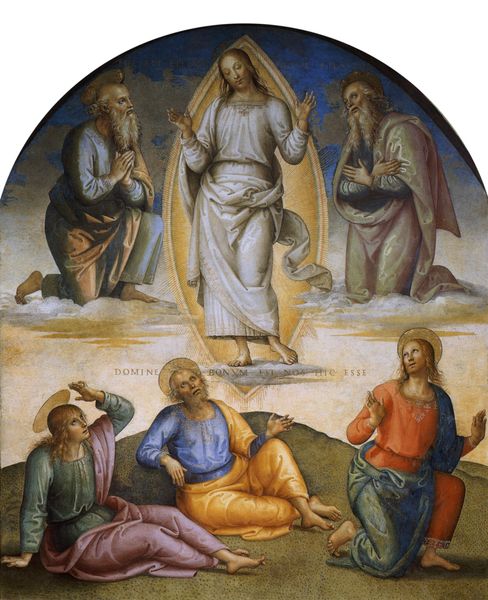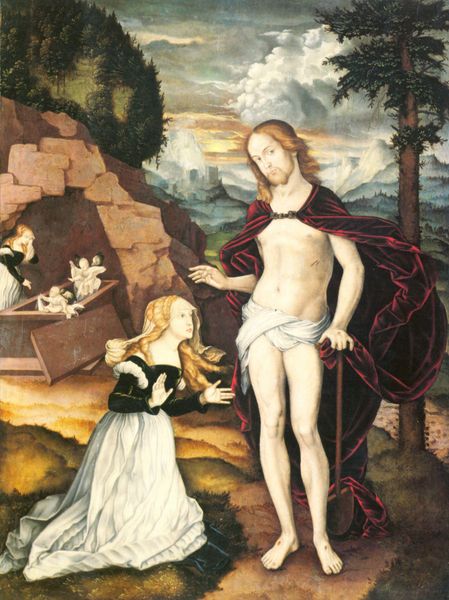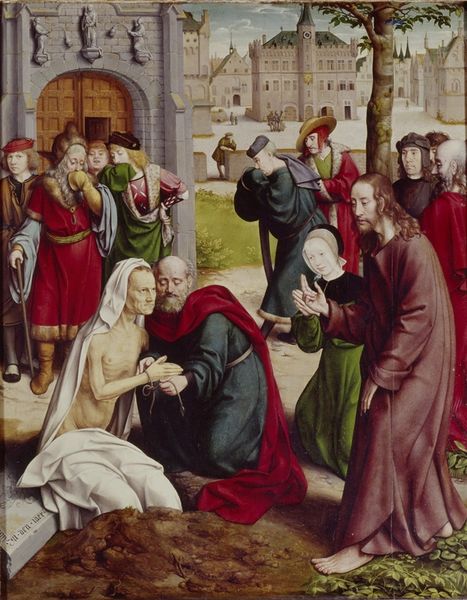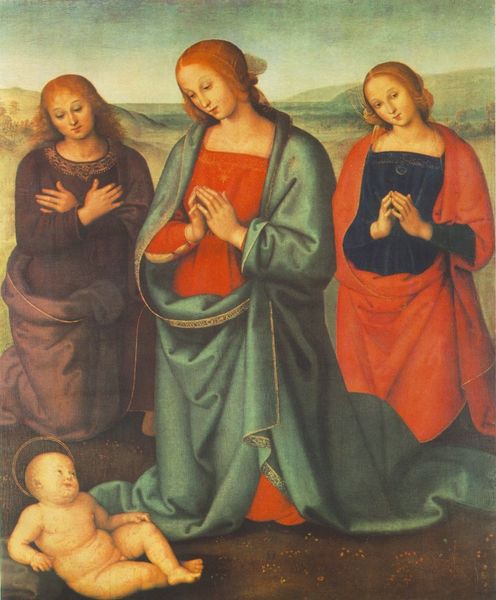
painting, oil-paint
#
portrait
#
painting
#
oil-paint
#
figuration
#
oil painting
#
history-painting
#
northern-renaissance
#
early-renaissance
#
portrait art
Dimensions: painted surface: 124.2 x 79 cm (48 7/8 x 31 1/8 in.) overall (panel): 125.3 x 81.1 cm (49 5/16 x 31 15/16 in.) framed: 143.2 x 99.1 x 10.8 cm (56 3/8 x 39 x 4 1/4 in.)
Copyright: National Gallery of Art: CC0 1.0
Curator: Here we have Juan de Flandes's "The Baptism of Christ," believed to have been painted sometime between 1508 and 1519, rendered in oil. What are your immediate thoughts? Editor: The palette is striking, it has such a soothing yet vibrant affect; although the overall feeling for me, is one of melancholic resignation, even solemnity. Curator: Absolutely, the mood reflects a profound historical and political context. Christ’s baptism isn’t just a religious ritual; it's a turning point, and Flandes's placement of the city in the background possibly speaks to the earthly powers at play in the historical narrative of religious figures. Editor: I agree, this work depicts both purity, in the form of the dove and God above, and urbanity and human corruption. The stark depiction of John's act juxtaposes sharply against the city on the horizon. Tell me, how do you perceive the significance of that rather haunting landscape lurking there in the back? Curator: It subtly comments on societal power structures. Baptism offered spiritual equality, in contrast with the often oppressive earthly hierarchies, and gender norms prevalent at the time. God, represented as traditionally masculine, oversees a ritual performance mainly carried out by men, with the demure female, angelic presence mostly just bearing witness, rather than playing any true part in this rite. Editor: The artist employs this powerful icon of the dove—a symbol so deeply embedded in Western consciousness to convey something elemental about both grace and renewal. This imagery, seen in the context of Christ's life, speaks to both the potential for transformation and humanity's longing for a clean slate. But do you feel the rainbow is overdone at all? It almost feels gaudy somehow. Curator: Perhaps it does contrast with the overall somber feeling of the scene; however, even in this, we can see the promise of an arc—a path forward beyond social injustice for any who accept it, in alignment with his teachings and values. Editor: Looking closely, I also notice that the painter seems more concerned with rendering the idea of 'city', rather than any city in particular, since none of the landmarks seem clear. It reminds me of a theatrical stage set, a place of make believe almost, perhaps an intended signifier for all civilization, rather than one place on Earth. Curator: Flandes uses accessible iconography to address complex sociopolitical issues relevant to his era—yet strikingly relevant to ours too. Editor: Precisely! It's a timeless piece that speaks volumes to any thoughtful observer ready to delve beneath its surface.
Comments
No comments
Be the first to comment and join the conversation on the ultimate creative platform.
